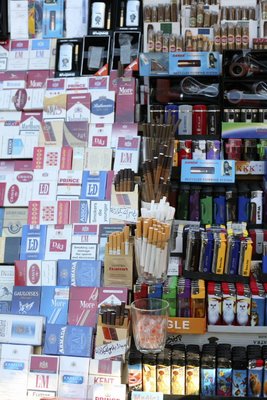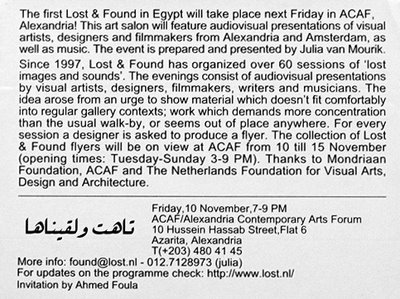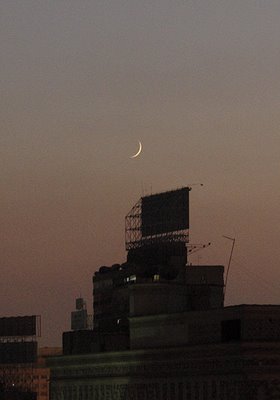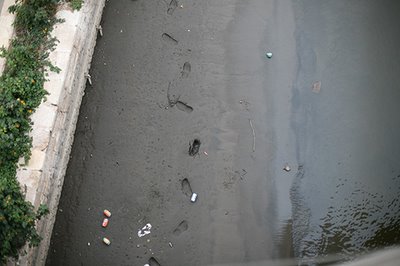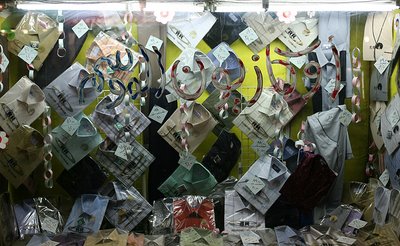The Search:Turn left down a small lane in the Talaat Harb district of downtown Cairo, amidst the grease and bustle of auto repair shops and kosheri stands, and discover a paper trail with the words LOST and FOUND printed on simple 8 x 11 inch white sheets. Like any missing item poster, the haphazardly affixed signs look more like last resorts than tangible possibilities. Yet wander up the sweeping staircase of a dilapidated stone villa and into the renovated library of the Townhouse gallery and you will find this far-reaching hope materialized into reality. A small crowd is casually strewn among a collection of plastic chairs. Too comfortable to look up, they give the impression they have never been lost; perhaps we have just been looking in the wrong places. Most things that we recognize as lost, we quickly begin to think of as unattainable, even impossible. I come with the sole purpose of attending this event and I somehow still feel surprised to find it. Yet, here, tonight, in a city where contemporary art is sparse, controlled, and even censored, this gathering could not seem more natural. The room is narrow and the freshly painted walls only lightly cover the cracks and depressions of time. Like the idea of artistic exchange, the building is far from new. Later in the night, as the crowd thickens, people will have to stand outside the doorway to prevent the fragile, aged floor from falling through.
The Evening Begins:A bearded man with a big smile taps my shoulder. His hand, extending from a worn checkered sweater offers an invitation to a show in Alexandria next weekend. Another thin, sprightly girl, with curls that double the size of her face, follows his lead with a glossy picture of her artwork and contact information. The rustling of bags and the volume of collective whispers muffle the uncooperative video playing at the front of the room. The clip starts and stops; a hand holds a mobile phone and searches for the contact, ‘Lost and Found’, onscreen. The crowd occasionally looks around to see if the event has begun, but is otherwise content chatting.
Technical difficulties persist. The room is now brimming full. If you are not friends you become friends in waiting. A fedora hat, a nose piercing, an orange wool sweater, and an Islamic veil catch my attention. A silver-haired British woman sits to my right and a young Egyptian man with thickly gelled hair and a bright track jacket takes a seat to my left. “Are you nervous?” Julia van Mourik, curator of the event, wraps her arm around a young woman two rows ahead of me. The artist giggles without reservation. She is comfortable enough to concede that she is.
The lights turn off. “Ahlan wa sahlan.” “Welcome.” The program begins.
The Work:The night contained eight works of varying interest, style, and subject matter, along with two heated debates.
A shaky camera follows an immigrant bus driver in Denmark on his daily route. Through the dark, unfocused lense, we see a relationship emerge between the subject and the artist. Endearingly, he opens up to her and defends her cause when Danish bus riders criticize her right to film.
Na’ima el Misriyya, a once legendary but now forgotten Egyptian singer, is brought back to life through the loving eyes and persistent research of her great-granddaughter. Through faded photographs and restored music and magazine clippings, the artist is able to recreate 1920’s Cairo and the forgotten feminist wave.
One photographer’s literal movement through time and space captures the appearance of color, light, and motion in Cairo’s landscape. Guided by his sensitive eye, we take a journey through the city at sunset. The chosen hour highlights, magnifies, and even glorifies the quiet, simple activities photographed. Another photographer also focuses on color, light, and motion, through abstract palettes. Foregoing literal travel, he jostles his camera to magnify the impression of these elements.
A highly polished film reverses the production, life, and death of white rabbits during the holiday consumption season in order to emphasize the mechanics imposed on the process. The artist spares no angles, explicitly exposing each step. We experience the utilitarianism of society and the suffocation of a natural process.
An A-list Egyptian actress performs a monologue in a student’s independent film project. The character wakes up to go to work one morning and not finding her key, begins to reflect of the myriad problems in her life. Over the course of the film, she moves from the spiraling and overwhelming depths of sadness, anger, and exasperation, to triumphant levity. Upon finding the key, she realizes that it is Friday and she needn’t worry till next week. With a chuckle, she goes back to bed.
Most intriguing was the dialogue that developed organically among the audience members. Unmediated and undirected, the audience used the presented pieces as a springboard to discuss larger, conceptual artistic issues present in contemporary debate. Diversity among the work spurred an accusatory and defensive discourse on the definitions of ‘high’ and ‘low’ art and the applicability of such terminology in the ‘Lost and Found’ context. With a range of budgets, experience, mediums, and cultures, it was impossible not to notice wide gaps between the pieces. A film made by a lonely Egyptian artist in Switzerland inspired an emotional discussion over the concept of private and public space and artistic ethics. The filmmaker used the pain and anxiety of a stranger to express his own state of distress. The subject crouches behind a fence by a riverbed, nervously scanning the promenade with darting eyes. Other than his expression, he is motionless, held hostage by his fear. The artist is able to capture the subject only in secret, using a telescopic lense, without consent. The result was an emotional outburst from the audience. Some members were offended by the artist’s appropriation of another’s personal trauma and others were indignant that such a standard should be imposed on a free form of expression.
After the show, the young girl with the nose piercing and the silver-haired British woman took the discussion out to the streets. They lingered in the stairwell, arms flailing, and brows furrowed locked at a standstill.
Tension, conflict, and communication are inherent to art. I was happy to find them alive and well in Cairo.
Kira Shewfelt, December 3, 2006.




